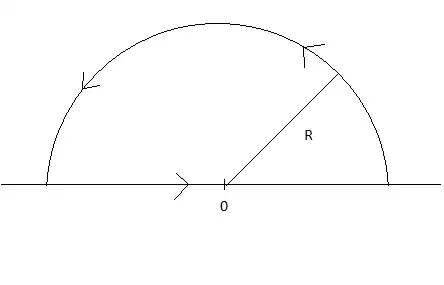$\newcommand{\bbx}[1]{\,\bbox[15px,border:1px groove navy]{\displaystyle{#1}}\,}
\newcommand{\braces}[1]{\left\lbrace\,{#1}\,\right\rbrace}
\newcommand{\bracks}[1]{\left\lbrack\,{#1}\,\right\rbrack}
\newcommand{\dd}{\mathrm{d}}
\newcommand{\ds}[1]{\displaystyle{#1}}
\newcommand{\expo}[1]{\,\mathrm{e}^{#1}\,}
\newcommand{\ic}{\mathrm{i}}
\newcommand{\mc}[1]{\mathcal{#1}}
\newcommand{\mrm}[1]{\mathrm{#1}}
\newcommand{\pars}[1]{\left(\,{#1}\,\right)}
\newcommand{\partiald}[3][]{\frac{\partial^{#1} #2}{\partial #3^{#1}}}
\newcommand{\root}[2][]{\,\sqrt[#1]{\,{#2}\,}\,}
\newcommand{\totald}[3][]{\frac{\mathrm{d}^{#1} #2}{\mathrm{d} #3^{#1}}}
\newcommand{\verts}[1]{\left\vert\,{#1}\,\right\vert}$
\begin{align}
&\bbox[5px,#ffd]{\int_{-\infty}^{\infty}{x^{2} \over
x^{4} + 1}\,\dd x} =
2\int_{0}^{\infty}{x^{2} \over x^{4} + 1}\,\dd x
\,\,\,\stackrel{x^{\large 4}\ \mapsto\ x}{=}\,\,\,
{1 \over 2}\int_{0}^{\infty}{x^{-1/4} \over 1 + x}\,\dd x
\label{1}\tag{1}
\end{align}
However, $\ds{{1 \over 1 + x} =
\sum_{k = 0}^{\infty}\pars{-x}^{k} =
\sum_{k = 0}^{\infty}\color{blue}{\Gamma\pars{k + 1}}{\pars{-x}^{k} \over k!}}$.
With Ramanujan's Master Theorem, (\ref{1}) becomes
\begin{align}
&\bbox[5px,#ffd]{\int_{-\infty}^{\infty}{x^{2} \over
x^{4} + 1}\,\dd x} =
{1 \over 2}\int_{0}^{\infty}{x^{\color{red}{3/4} - 1} \over
x^{4} + 1}\,\dd x =
{1 \over 2}\,\Gamma\pars{\color{red}{3 \over 4}}
\color{blue}{\Gamma\pars{-\,\color{red}{3 \over 4} + 1}}
\\[5mm] = &\
{1 \over 2}\,{\pi \over \sin\pars{\pi/4}} =
\bbx{{\root{2} \over 2}\,\pi} \\ &
\end{align}
